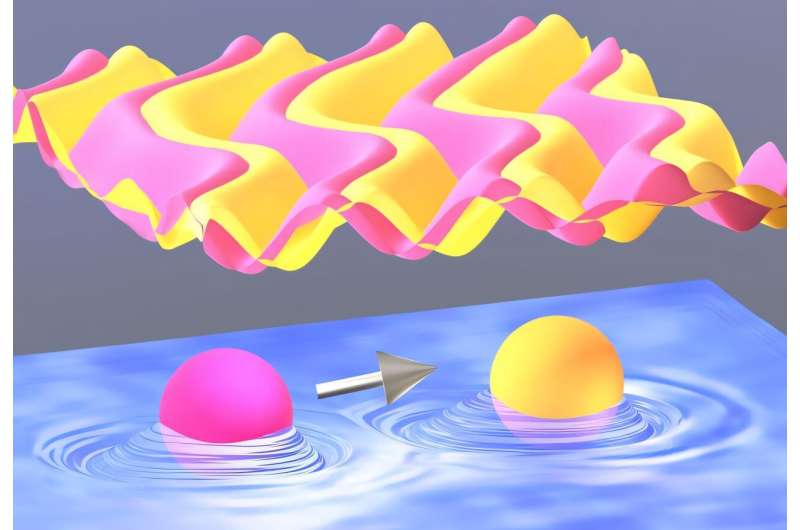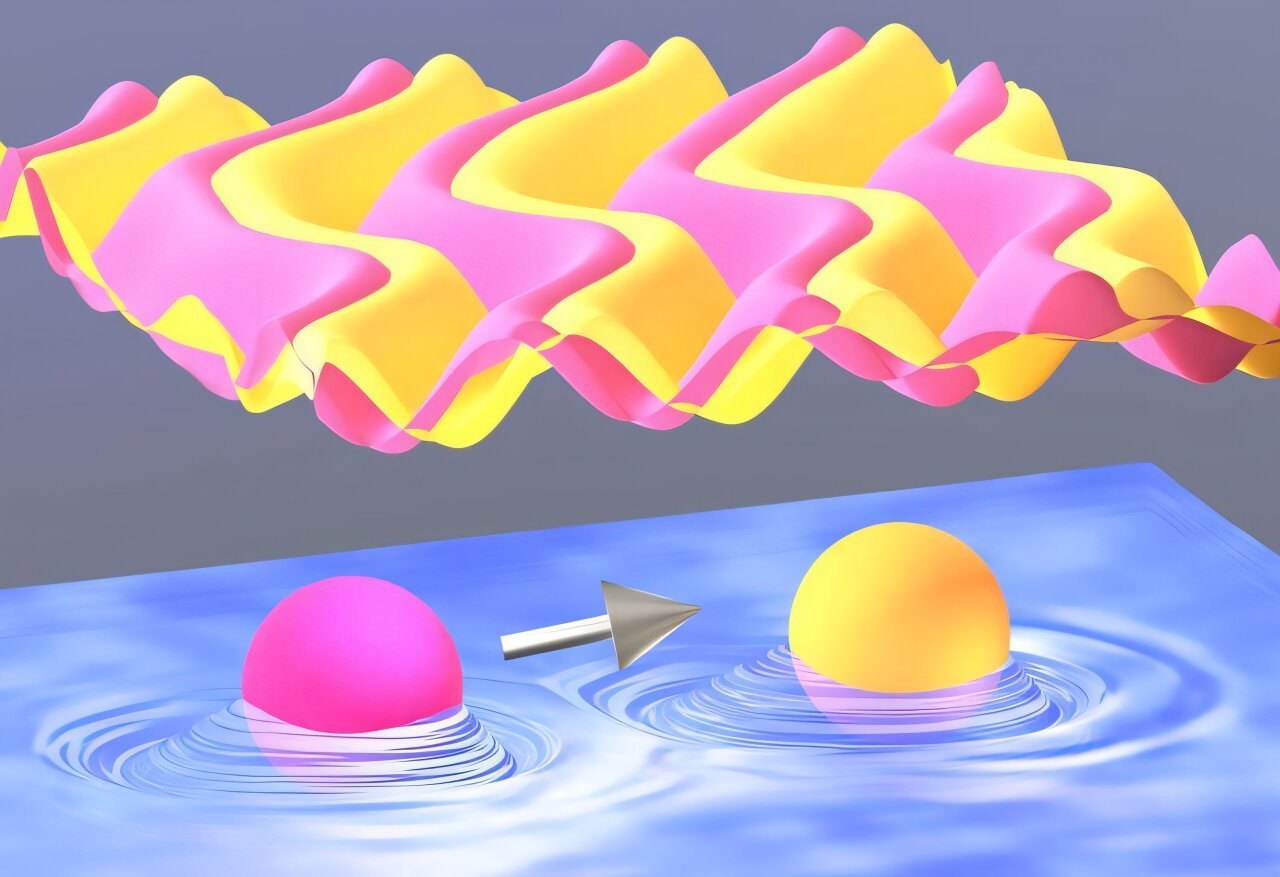
Non-reciprocal interactions drive large-scale collective motion, where one species chases the other forming spatiotemporal patterns. Credit: Max Planck Society
In nature, ordered structures are essential to maintain both stability and functionality in living systems, as observed in repeating structures or the formation of complex molecules. Yet, the creation of this order is based on universal physical principles which eventually allow the creation of living matter and organic structures.
One of these principles is non-reciprocal interactions: one type of molecule is attracted by another which, on the contrary, is repelled. This phenomenon can give rise to interesting structures and patterns.
Scientists from the department of Living Matter Physics at MPI-DS have now discovered that non-reciprocal interactions can also induce stable collective movement in living systems. The study is published in the journal Physical Review Letters.
Giulia Pisegna, first author of the study, describes the findings: “The chasing dynamics of non-reciprocal interactions gives rise to a spontaneous collective and directed motion of the particle species on a bigger scale. While such activity might create chaos on first sight, it creates remarkably stable and ordered structures instead.”
To challenge the stability of the system, the physicists first introduced noise and disturbances to disrupt the emerging order and motion.
“We found the motility pattern to be remarkably robust and stable,” reports Suropriya Saha, group leader at MPI-DS.
This result was achieved by connecting the model for non-reciprocal interactions to two apparently very distant theories: the theory for flocking and one for surface growth dynamics.
Secondly, the researchers explored how the pattern behaves when the particles are placed in a fluid in which they can interact. Typically, this additional factor tends to disrupt collective motion. However, the team found that the moving pattern remains stable if generated by non-reciprocal interactions. This demonstrates a remarkable resilience to complex experimental conditions.
“These results tell us that non-reciprocal interactions are at the core of primitive self-organization in complex chemical environments, and will help us to predict and describe properties of living systems,” concludes Saha.
More information:
Giulia Pisegna et al, Nonreciprocal Mixtures in Suspension: The Role of Hydrodynamic Interactions, Physical Review Letters (2025). DOI: 10.1103/gbg1-lwwt
Provided by
Max Planck Society
Citation:
Chasing and splashing molecules create resilient order from apparent chaos, study shows (2025, November 5)
retrieved 6 November 2025
from https://phys.org/news/2025-11-splashing-molecules-resilient-apparent-chaos.html
This document is subject to copyright. Apart from any fair dealing for the purpose of private study or research, no
part may be reproduced without the written permission. The content is provided for information purposes only.

